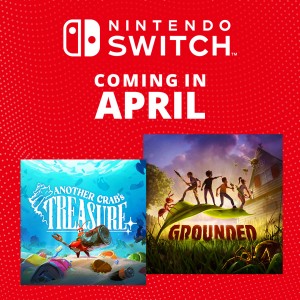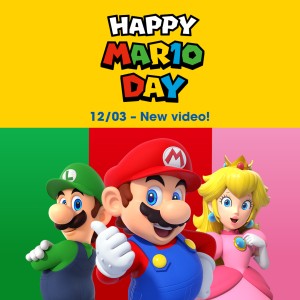Drawing Wario: The animation of Wario Land
19/09/2008
The staff at Nintendo Online Magazine in Japan sat down with the developers of Wario Land: The Shake Dimension to discuss Wario’s latest adventure. The following is a transcript of that interview. You can click this link to read part one of the interview.
Nintendo Online Magazine: The way Wario moves is rather distinctive.
Etsunobu Ebisu, producer: In addition to designing a platform game with simple operability, we thought about what direction to take regarding visual elements such as backgrounds. (Producer Takahiro Harada) and I exchanged ideas for a while, and eventually settled on the current style.
Takahiro Harada, producer: One of our goals this time was to create the ultimate 2D game.
Tadanori Tsukawaki, design director: When (director Madoka) Yamauchi proposed using entirely hand-drawn animation for visuals, I was hesitant. With hand-drawn animation, making changes is hard.
Harada: With a 3D Wario made from polygons, it’s easy, for example, to change the shape of his beard a little. With traditional animation, there would be hundreds of frames showing Wario, and you’d have to change them all. For backgrounds, to change the position of an object even a little, you can’t just replace one part—you have to change the whole thing.
Tsukawaki: In the beginning, I was worried, but as we progressed, I thought, ‘This has impact!’ First the animators provided us with line drawings. We used those to run the game, and even with just the line drawings the movement looked good. It had a warmth you don’t always get with polygons.
NOM: How many frames did you use for the animation?
Tsukawaki: It depends on the particular movement, but for one action, about 30. For Wario alone, there were over 2000. For the enemies, there were about 6000, including the ones we eventually cut. We had to digitalize all of those to be plugged into the software. (Program director Koichi) Yagi put a lot of effort into that.
Koichi Yagi, program director: I’ve been a programmer for a long time, but it was my first time to make a game with so many patterns. Like Tsukawaki said, there were about 2000 for Wario—about 200 separate actions. Those are stored in memory, so they can be displayed at any time. It took some clever programming to achieve that.
Tsukawaki: It was pretty crazy. (laughs)
Yagi: The backgrounds don’t repeat, so the volume for scenery was greater than I’ve ever seen. It was so big that the scenery alone would have filled up the GameCube. It wasn’t easy to pack all that in.
Ebisu: Early on we considered making the game in 3D. Based on past experience making platform games, I knew the amount of work involved in hand-drawing everything from characters to scenery would be tremendous. Way back when, it was something you dreamt about, but never actually achieved. This time, however, we decided to give it a shot.
NOM: (Animation companies) Production I.G and Kusanagi were involved in design, right?
Ebisu: That’s right. We thought we should request help from animation companies who would have more know-how. Production I.G helped with character animation and the opening and ending sequences, and Kusanagi helped with the backgrounds.
Tsukawaki: Developing a game is something you figure out as you go. The need for alterations is going to arise, but when the animation is already moving along, a conflict arises. All the backgrounds were hand-drawn, too, so even a small change meant everything had to be changed. Whenever (Kentaro) Sei, who was in charge of stage construction, said, ‘Let’s put a secret passage here,’ we knew we were in for some hard labour. (everyone laughs)
Tsukawaki
We’d say, ‘What?! What’s the big idea?!’ and he’d say, ‘It’ll be easier for the player if we do it this way, won’t it?’ and then we’d say, ‘OK, OK, if we do it that way, then...’ In the end we always came around.
Kentaro Sei, planning: Yeah, we were at each other’s throats every day. (laughs)
NOM: Since this game is an extension of the Wario Land series, how did you make it feel like Wario Land?
Madoka Yamauchi, director: Primarily, the intense action. We took great care to include showy and rambunctious elements in the game. That’s the reason we decided to have shaking the remote actually shake the screen.
Harada: Wario just tries to take what he wants. He isn’t trying to do anything wrong. The results of his actions can be either bad or good. He sure can stir up trouble, though.
Tsukawaki: After I’d played a bunch of the games in the series, I thought Wario was pretty manly. He’s so uncool that he ends up being extremely cool. Depending on the game, he can be coarse—farting and doing stuff like that, but I didn’t want to show that side of him. As much as possible, I wanted to show a macho Wario, one who is masculine and tough. I asked the animators to emphasize strongly his manly characteristics. We built up this image step-by-step during the animation process.
NOM: So...Wario is macho?
Tsukawaki: He is. He’s the kind of guy you could enjoy tossing back a few drinks with.... But I guess making conversation might be hard. (laughs) Some of the ladies in the office were complaining at first about how his nose is pink, but in the end they started using pictures of him for their desktop wallpaper. Now they say he’s cool. (laughs)
NOM: How did Syrup, who leads Wario on, come to enter into the game?
Harada: It started with Wario Land: Super Mario Land 3 for the Game Boy. The character controlling the final boss was Captain Syrup, but ever since then she’s mostly been overlooked. We thought it was about time she made another appearance. She’s pretty and charming, and a little devious.
NOM: Did you design the music to reflect the character of Wario Land?
Tomoya Tomita, music and sound effects: I played the Game Boy Advance version and listened to the music for the other games as well. It was completely different from the music in Nintendo’s other platform games. Some stages feature cute, girly music, even though the enemies are relentless! (laughs)
NOM: It’s sort of surreal.
Tomita: That’s right. So we wanted to use music that was slightly unusual. There’s some normal platform game music, too, but for the most part, it isn’t what you might expect.
Harada: Many people on the debugging team liked the music, too, although there was quite a variety among the songs each person said was their favourite.
Sei: Each stage has its own specific missions. At first we had put in an element of being rewarded for extra effort whereby completing all the missions would unlock the soundtrack for that stage in the Audio Room. Tomita overturned that idea, though, because then we wouldn’t be able to put out the sound track. (laughs)
NOM: Do you have a favourite song from the background music?
Tomita: I like the song for Mt. Lava Lava. At first we created it with Wario in mind. He can be a little fierce and hot-headed, and that led us to use it for the volcano stage. (Note: The Mt. Lava Lava music can be heard at the beginning of the game’s trailer.)
Click here for part three of this interview.
Wario Land: The Shake Dimension is in shops 26 Sept., only on Wii.





